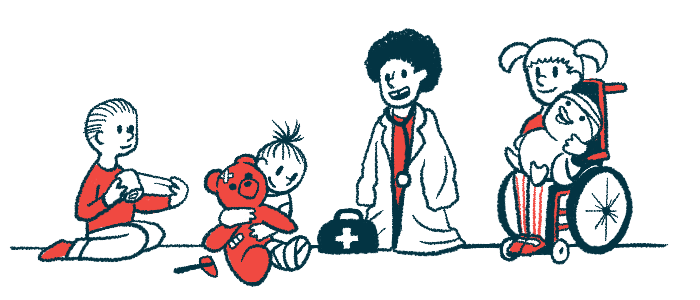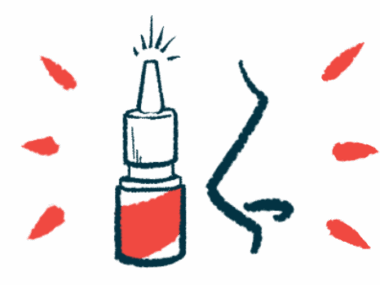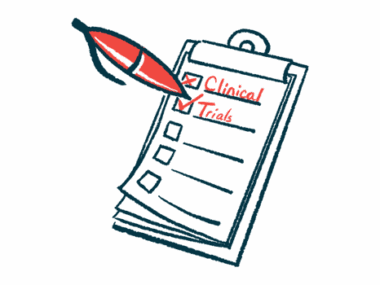Pitolisant shown to reduce daytime sleepiness in PWS, especially in kids
Results from proof-of-concept trial support therapy's testing for Prader-Willi
Written by |

Once-daily treatment with pitolisant is generally safe and helps reduce excessive daytime sleepiness (EDS) and abnormal behaviors in people with Prader-Willi syndrome (PWS) — notably with the repurposed therapy given at higher doses, and especially in children.
That’s according to the full results of a proof-of-concept trial that tested two doses of the Harmony Biosciences therapy — approved in the U.S. for patients with the neurological condition narcolepsy — against a placebo in 65 children and adults with PWS.
The Phase 2 clinical trial (NCT04257929), launched in late 2020, had enrolled PWS patients ages 6 to 28, who were recruited at 13 U.S. sites. All experienced EDS despite getting an adequate amount of sleep at night.
The new data were detailed in “A proof-of-concept study of pitolisant for excessive daytime sleepiness in patients with Prader-Willi syndrome,” a study published in the Journal of Clinical Sleep Medicine by a team of U.S. researchers. The study was sponsored by Harmony, and six of the 12 authors are employed by the company. Further, one of the researchers has served as a trial investigator for Harmony, and another has worked as a consultant. One of the authors has received research funding from the company.
According to the team, “these findings support further investigation of the efficacy and safety of pitolisant for patients with PWS and EDS in a larger placebo-controlled clinical trial.”
A Phase 3 study dubbed TEMPO (NCT06366464) is now ongoing at sites in North America, Europe, and Australia, and may still be recruiting participants ages 6 and older.
Many symptoms of PWS result from changes to the hypothalamus, a region of the brain that controls a range of bodily functions, including the normal sleep-wake cycle. As a result, patients often experience disturbed nighttime sleep and an urge to sleep during the day.
“EDS can interfere with learning, adversely affect daily functioning and performance, and contribute to emotional disturbance and behavioral disorders,” the researchers wrote, also noting that increased napping can “disrupt daily routines and adversely affect the quality of life of patients and their families.”
The researchers noted, however, that “currently, no medications are approved specifically to treat EDS in patients with PWS, and management relies on off-label use of stimulants and other wake-promoting treatments, such as pitolisant.”
Pitolisant approved in US to treat adults with sleep disorder narcolepsy
Available as oral tablets, pitolisant is approved under the brand name Wakix to treat EDS or cataplexy — a sudden onset of weak or paralyzed muscles — in adults with narcolepsy. With that condition, the brain can’t control when to sleep or stay awake.
The therapy works by increasing the brain levels of histamine, a signaling molecule that in the hypothalamus is involved in several bodily functions. These include regulation of the sleep-wake cycle, appetite, cognitive function, and memory.
Specifically, pitolisant prevents histamine from attaching to its H3 receptor protein on nerve cells, which suppresses its production. As a result, more histamine is available in the hypothalamus, activating the brain’s wakefulness systems.
Slightly more than half of the participants in the Phase 2 trial — all of whom were diagnosed with PWS — were children ages 6 to 11. Each was randomly assigned to one of three groups: low-dose pitolisant, high-dose pitolisant, or a matching placebo, for 11 weeks, or slightly longer than two months.
The assigned treatment was taken once daily in the morning, with the pitolisant doses gradually increased over three weeks and then maintained for eight weeks.
Most participants (90.8%) completed the placebo-controlled portion. These individuals then had the option to move to the study’s open-label extension portion, in which all are receiving the therapy for a longer period.
Therapy’s higher dose led to greater reductions in behavior problems
The trial’s main goal was to watch for changes in the Epworth Sleepiness Scale for Children and Adolescents (ESS-CHAD), which parents or caregivers fill out to rate how sleepy patients are during daily activities. Scores range from zero to 24, with lower scores reflecting less sleepiness during the day.
Secondary goals were changes in caregiver impressions of EDS severity, the Aberrant Behavior Checklist-Community (ABC-C), and the Hyperphagia Questionnaire for Clinical Trials (HQ-CT), as well as safety measures.
ABC-C is a caregiver-reported assessment of behavioral problems, and the HQ-CT is a caregiver-reported measure of hyperphagia, or the insatiable hunger that characterizes PWS. In both measures, lower scores indicate less severity.
As previously reported, participants taking the high dose of pitolisant showed the largest improvement in EDS relative to those on the placebo (ESS-CHAD score drop of 5 vs. 3.9). Children ages 6 to 11 years taking the high dose showed the greatest improvement, reflected by a score difference of 3.5 points relative to those given the placebo.
The low dose of pitolisant had smaller or no noticeable effects compared with the placebo.
The high dose was also associated with greater reductions in behavioral problems relative to the placebo, but these differences only reached statistical significance for appropriate speech. The researchers noted that the largest ABC-C score drop with high-dose pitolisant was in irritability, which showed a score reduction of 5.5 points.
Similar to what was seen for EDS, the greatest behavioral improvements were seen in children, 6-11 years, given the high dose.
In this Phase 2, exploratory, proof-of-concept study, treatment with pitolisant was associated with reductions in [excessive daytime sleepiness] and behavioral symptoms in patients ages 6-65 years with PWS and was well tolerated.
While most participants did not show substantial hyperphagia, those given pitolisant’s high dose showed greater HQ-CT score reductions, by 3.1 points, relative to those on the placebo.
Both children and adults experienced greater hyperphagia lessening with the therapy, while adolescents showed greater improvements with the placebo.
The most commonly reported adverse events in the pitolisant groups were anxiety, irritability, and headache, each occurring in about 11.9% of people. These effects were consistent with what is already known about the medication’s safety profile.
No serious adverse events were reported with pitolisant.
Overall, “in this Phase 2, exploratory, proof-of-concept study, treatment with pitolisant was associated with reductions in EDS and behavioral symptoms in patients ages 6-65 years with PWS and was well tolerated,” the researchers wrote in a “brief summary” on the study’s impact.
The team also called for the assessment of potential “long-term health benefits (e.g., increased participation in daily activities, decreased food intake, more opportunities for socialization)” with pitolisant in future studies.







